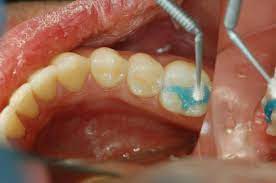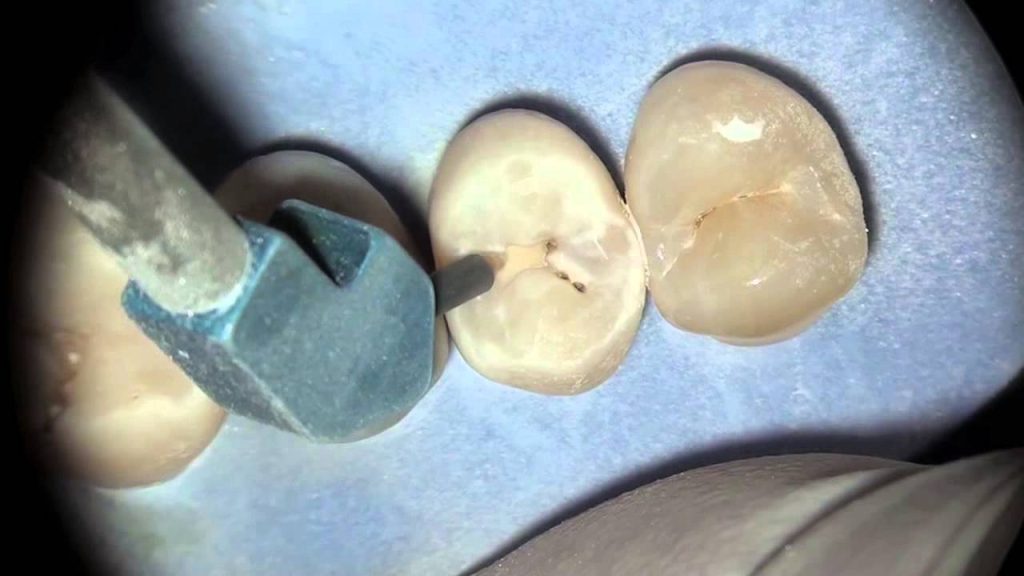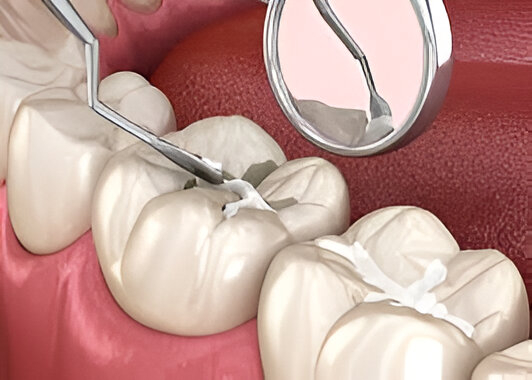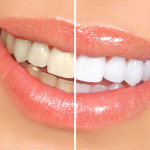The fight against tooth decay is mainly focused on the chewing surfaces of your back teeth—the molars and premolars. While the smooth outer surfaces are easily cleaned with a toothbrush, the tops of these teeth have natural vulnerabilities. These pits and fissures—deep, narrow grooves—act like micro-caverns that trap food particles and harbor destructive bacteria. Dental sealants provide a protective barrier over these grooves, helping to prevent bacteria and food from getting trapped.
Even with careful brushing and flossing, these grooves are often out of reach. Plaque, a film of bacteria, quickly establishes itself in these areas. The bacteria feed on sugars from food and drinks, producing acids that erode enamel in a process called caries. Over time, decay can progress through the dentin and reach the pulp—the tooth’s sensitive core containing nerves and blood vessels. Applying dental sealants early can block this progression, highlighting the importance of proactive preventive care to protect long-term oral health.
Understanding Dental Sealants: A Protective Physical Barrier
The fight against tooth decay is primarily waged on the chewing surfaces of your back teeth: the molars and premolars. While the smooth outer surfaces of your teeth are easily cleaned by a simple sweep of a toothbrush, the top surfaces are riddled with natural vulnerabilities. These are the pits and fissures, deep, narrow grooves and depressions that act like micro-caverns, perfectly designed by nature to trap food particles and host destructive bacteria.
Consequently, even meticulous brushing and flossing often cannot fully access these deep grooves. The film of bacteria known as plaque quickly takes root here. The bacteria in plaque use the sugars in food and drinks to produce harmful acids. This process, known as the caries process, quickly begins to erode the enamel, leading to the formation of dental cavities. If left unchecked, the damage progresses through the dentin and eventually reaches the delicate core of the teeth—the pulp, which contains the nerves and blood vessels. This progression highlights why early, effective preventative treatment is paramount to long-term oral health.
Understanding Dental Sealants: A Protective Physical Barrier
The solution to these vulnerable occlusal surfaces is surprisingly simple yet remarkably effective: Dental Sealants. A Dental Sealant is a thin, durable coating applied directly to the chewing surfaces of the back teeth from decay. Think of it as a clear, custom-fitted shield that smooths over the complex terrain of the molars, making it impossible for food and bacteria to hide.

Sealants are primarily composed of specialized resins or glass-based materials. Historically, the standard material has been a strong liquid-plastic material made from composite resins. However, the field of dental materials has advanced to include alternatives like glass ionomers and polyacid-modified resins, which offer unique properties like fluoride release. The central advantage of all these materials is their ability to form a complete physical barrier, effectively blocking the destructive acids produced by cavity-causing bacteria.
The Sealant Application Process: Quick, Painless, and High-Tech
One of the greatest benefits of Dental Sealants is the straightforward and non-invasive process. It is completely pain-free and requires no drilling or removal of tooth structure. The entire procedure, usually performed by dentists or dental hygienists as part of a routine dental care visit, takes mere minutes per tooth.
The sealant application process involves four key steps:
- Cleaning: The surfaces of teeth are thoroughly cleaned of any existing plaque and food particles.
- Preparation: An acid etching solution is applied to the surface of the tooth for a short time. This step is critical as it microscopically roughens the enamel, creating the necessary texture for the sealant material to bond tightly.
- Application: The strong liquid-plastic material (the liquid plastic) is painted onto the pits and fissures. The low viscosity allows the material to flow into the deep grooves.
- Curing: A specialized curing light (typically a bright blue light) is directed at the sealant material for a few seconds. This causes the material to light to harden instantly, forming a solid, resilient seal.
The ease of this process means that the patient experience is excellent, requiring minimal chair time, and there are no drawbacks or major disadvantages related to the application itself.
Protection Across the Lifespan: From Children to Adults
While Dental Sealants are most commonly associated with children and teens, their benefits extend to adults as well. The timing of application is a critical measure of their effectiveness.
For Kids and Teens
The CDC strongly advocates for sealants because the peak period for developing new cavities is between the age of six and fourteen. This timing coincides with the eruption of the permanent molars. Sealing the surfaces of molars as soon as they fully erupt provides immediate, long-term protection before plaque has a chance to settle. This preventative step greatly reduces a child’s risk of tooth decay throughout their school time.
For Adults
Many adults still possess molars with natural deep grooves that have never been sealed. If these teeth show no signs of previous tooth decay or fillings, applying Dental Sealants remains a viable and highly recommended option. For individuals who have high levels of cavity-causing bacteria or have difficulty maintaining oral hygiene due to dexterity issues, the sealants provide a powerful defensive layer. The longevity of modern sealants means this single treatment can provide years of sustained protection.

Sealants vs. Fluoride: A Dual Strategy for Oral Health
Dental Sealants work best when used in conjunction with other dental care treatments, specifically fluoride. While both are preventative, they serve fundamentally different functions in maintaining health.
| Preventative Strategy | Primary Function | Mechanism |
| Dental Sealants | Physical Barrier | Mechanically smooths pits and fissures, blocking food particles and bacteria from entry. |
| Fluoride (Toothpaste/Varnish) | Chemical Defense | Strengthens the enamel itself and can reverse early caries process before it progresses to the dentin. |
Export to Sheets
Using fluoride toothpaste and receiving regular fluoride varnishes from your dental professional strengthens the tooth from the inside out. Sealants protect it from the top down. Consequently, the combination provides the most comprehensive defense against dental cavities. This multi-faceted approach, along with consistent brushing, flossing, and perhaps a therapeutic mouthwash, is the gold standard for maintaining optimal oral health. The overall goal is to prevent the microbiological shifts that allow bacteria in plaque use sugars in food to escalate tooth decay.
Public Health Endorsement and Effectiveness
The use of Dental Sealants is one of the most cost-effective and clinically proven methods of preventing tooth decay. Major health organizations, including the the CDC Division of Oral Health, endorse sealant application as a critical public health measure.
In many communities, school sealant programs or school-based dental sealant delivery programs have been established to provide access to vulnerable people, often supported by initiatives like Medicaid or CHIP. These programs demonstrate the wide acceptance of this preventative treatment among healthcare professionals, including physicians, nurses, and dieticians, all of whom contribute to comprehensive patient education. The high effectiveness of properly placed sealants is not merely anecdotal; it is backed by years of robust clinical data, demonstrating their long longevity and term of protection.
Maintenance and Longevity
While sealants offer a strong term of protection, they are not permanent. They are subject to wear and tear from chewing surfaces. The typical longevity of a sealant is between five and ten years, but they should be checked during every routine visit. Your dental professional will assess the condition of the sealant and can quickly repair or replace any section that is chipped or worn. This minimal maintenance requirement, coupled with the low cost relative to the cost of a filling, makes sealants an exceptionally attractive option for all patients.

Why Choose Delta Park Dental?
At Delta Park Dental, we view preventative treatment as the cornerstone of oral health. Located in Brampton, our team of dentists and dental hygienists utilizes only the highest quality sealant material and cutting-edge curing light technology. We prioritize patient education and ensure that the sealant application process is swift, comfortable, and highly effective for children, teens, and adults. When you choose our clinic, you are choosing a committed dental professional team focused on long-term, health-based solutions.
To help make essential dental care more affordable for our community, Delta Park Dental is a registered provider with the Canadian Dental Care Plan (CDCP).
The CDCP is a federal program designed to reduce financial barriers to oral health care for eligible Canadian residents who do not have access to private dental insurance.
Conclusion
Dental Sealants offer a powerful, practical, and pain-free defense against tooth decay, securing the health of your teeth for years to come. This simple treatment is one of the most effective ways to avoid future complex and costly procedures.
Don’t wait for the first sign of a cavity. Schedule your sealant application consultation in Brampton today.
Tags
- Brampton Dental Cleaning
- Veeners Dental
- Veeners Dental Near Me
- Dental Emergency Near Me
- Emergency Dental Brampton
- Root Canal Therapy
- Emergency Dentistry
- Veneers Dental
- Dental Veneers Near Me
- Dental Bridges Near Me
- Dental Bridge Brampton
- Bridge Dental Brampton
- Dental Bonding In Brampton
- Root Canal Treatment near me
- Wisdom Teeth Removal
- Whitening Teeth
- Whiten Teeth
- Brampton Dental Implant
- Dental Implant Brampton
- Dental Implant
- Dental Implant in Brampton
- Dental Veneers
- Wisdom Teeth Extraction
- Dental Veneer
- Dental Filling Before and After
- Dental Bonding
- Dental Crown in Brampton
- Wisdom Tooth Removal
- crown dental implant
- Dental Crown Near Me
- Dental Bonding Near me
- Dental Crown
- Dental Teeth Whitening
- Wisdom Tooth Extraction
- Dental Crown Brampton
- Teeth Whitening Dentist
- Dental Filling Brampton
- Dental Filling
- Teeth Extraction
- Dental Fillings
- Teeth Whitening Near Me
- Dental Filling Near me
- Tooth Extraction
- Dental Emergency Brampton
- Emergency Dentistry Services





